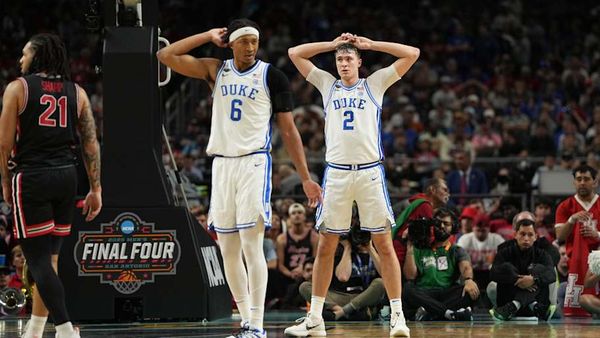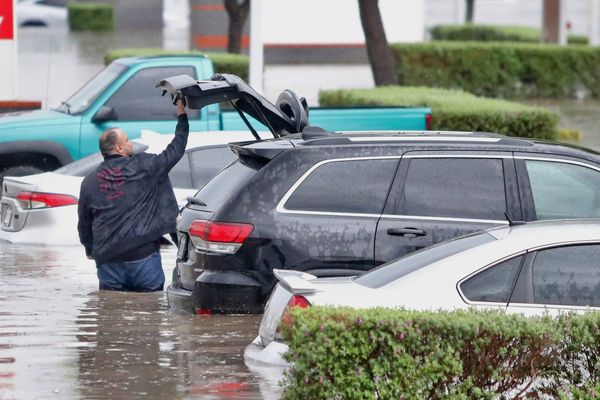There may be a long way to go until the summer transfer window opens, but Arsenal are already expected to again be one of the busiest teams in the Premier League.
"Obviously, we'll have to sign players in the summer, that's without a question of a doubt," said Mikel Arteta earlier this month when asked about his side's lack of business in January.
Having already agreed a deal to bring in Matt Turner from New England Revolution, many are expecting the Gunners' second deal to be for a striker, with Pierre-Emerick Aubameyang having already left North London, and Alexandre Lacazette and Eddie Nketiah expected to follow at the end of the season.
However, in recent matches Arteta appears to have dropped a hint that his primary focus may be elsewhere on the pitch.
Back in December 2020, when he was coming up to a year in the job at the Emirates Stadium, Arteta gave an interview outlining his dream vision for what an ideal Arsenal side would look like under his tutelage.
"We want to move to a 4-3-3," the Spaniard said. "But for that, you need a lot of specificity in every position but now in five or six positions, we don’t have it."
Those comments were largely forgotten about until a suspesnion for Granit Xhaka earlier this season saw Arteta decide to take the plunge and finally get his Arsenal side playing in the formation that he wanted.
Thomas Partey was used in the No.6 position, with Emile Smith Rowe and Martin Odegaard in the free No.8 roles.
The switch garnered some inital success, helping to secure a tough win away at Burnley, but Xhaka's return from suspension for the north London derby meant the 4-2-3-1 was back in fashion at the Emirates Stadium. The Swiss international would go on to pick up a serious knee injury in that very game, prompting suggestions that the dream could be resusicitated. But an indifferent showing against Crystal Palace proved to be the final nail in its coffin, and the double pivot was restored.
However, in recent matches, subtle tweaks have ensured that the 4-3-3 has risen from the dead.
More or less every pre-match line up graphic you see on TV will indicate that Arsenal are playing a midfield duo of Granit Xhaka and Thomas Partey, but the eagle-eyed amongst you will have noticed just how much further forward the Swiss international has been getting up the pitch in recent months.
In the recent run of form that the Gunners have found - excluding a run of games in January blighted by injury, COVID and suspensions - they have largely attacked in a 4-3-3 set up.
Partey is the deepest midfielder, responsible for starting attack, while Xhaka pushes up on the left, Odegaard is in the half space on the right, and Gabriel Martinelli and Bukayo Saka take up positions on the wings.
This still from an early attack in last Thursday's win at Wolves is demonstrative of that.
Another thing that Arteta focused on in that interview back in 2020, was the way he wanted his team to approach matches when off the ball.
The Spaniard made reference to his desire to see the Gunners focus on "the aggressiveness, the effectiveness and the amount of steals we make in opposition half."
This again is something that has changed in recent matches.
When many of us think of a high press, we picture Marcelo Bielsa's Leeds side going man-to-man with every player on the pitch and not giving them a second to breathe.
Arteta's press is, again, slightly more subtle than that.
When it comes to pressures this season, Arsenal actually sit bottom in the Premier League in terms of number of pressures applied and number of successful pressures (as per fbRef ). This is because instead of focusing primarily on the opposing player in possession, the Gunners are set up to cut off the available passing lanes, forcing them into wide areas of the pitch where their options on the ball become limited.
Again going back to Molineux last week we can see this.
Below, Max Kilman - who having made 25 caps for the England futsal team is one of the more underrated ball playing defenders in the Premier League - is in possession. Bruno Lage's coaching philosophy means that his teams will try and play from the back instead of going long, but here, Lacazette has cut off the passing lane to both Conor Coady and Jose Sa, while Granit Xhaka is high enough up the pitch to restrict Ruben Neves (in the centre of the screenshot) as a passing option.
Kilman is forced to go up the line to Nelson Semedo who is now crowded towards the touch line by Xhaka. The Portuguese full back is unable to go up the pitch to the forward-running Francisco Trincao due to the presence of Kieran Tierney, while Gabriel Martinelli has rendered the option back to Kilman impossible. As a result Semedo goes back inside, keeping Wolves in their own half, and eventually Arsenal win the ball back off Leander Dendoncker.
These two discrete but decisive developments in Arsenal's play in recent matches have transformed them rapidly from a side that was tame and passive in their 2-1 defeat to Everton at the start of December to one that is aggressive and front-footed.
A key difference that you may have noticed in these two changes though, is how much higher up the pitch Granit Xhaka is.
The 28-year-old has a strong bond with Mikel Arteta, who made it his first point of arrival after being appointed manager at the Emirates Stadium in 2019 to bring Xhaka's Gunners career back from the brink.
Despite a petulant red card against Burnley last season, many would argue that last season was the Swiss international's best in Arsenal shirt. When asked to explain his impressive form, Xhaka admitted that the clarity of a deeper role he'd been asked to fulfil by his manager had played a big part.
"[Arteta] put me in a position where I have freedom and the game in front of me," the former Borussia Monchengladbach man said. "This is what I like."
Now things have changed and Xhaka is being asked to play in a more offensive role that is exposing some of his limitations.
While the 28-year-old is an experienced leader, he has never been someone who copes well in tight spaces and the increased concentration of defenders in the opposition defensive third means that there are times when he can be guilty of giving up possession a little too easily.
Let's go back again to last week's trip to Wolves for evidence of this.
Arsenal are in possession and in their 4-3-3 set up, when Xhaka receives the ball from Kieran Tierney.
In this situation the Swiss midfielder wants time on the ball. Last season when his role was largely drop in to the left sided centre back birth and cover for the aggressive runs of Tierney, this is something he had in ample supply. Now that he is further up the pitch and more of a direct threat to the opposition goal, time is something he simply doesn't have.
He tries to take a touch and look up, but is immediately swarmed by Kilman and Trincao, before trying hurridly to play the ball down the line to Martinelli, which Semedo is able to easily intercept.
This is not to wholly criticise the job Xhaka does for the team.
In terms of that defensive solidity that is required in a big game away from home like the trip to Molineux, there are few capable of replicating what he offers in the current Arsenal squad. It's easy to see why Arteta trusts him in the big games.
But going back to that "specificity" the Spaniard mentioned at the very beginning of this article, it seems that Xhaka is sadly just lacking.
football.london understands that Roma are planning to come back in for the 28-year-old as Jose Mourinho seeks to finally get his man.
The 'Goldilocks' player will be hard to find, but with the signings of Aaron Ramsdale, Takehiro Tomiyasu, Ben White, Nuno Tavares, Albert Sambi Lokonga and Martin Odegaard in the summer, Edu has already shown that he is more than capable of sourcing the players who can meet his manager's demands.
Of course, signing a striker in terms of sheer numbers will be a priority this summer. However, as Arteta seeks to transition this Arsenal side towards his dream line up, the limitations exhibited by Xhaka,# mean that perhaps getting the right central midfielder may be an even more important acquisition.







